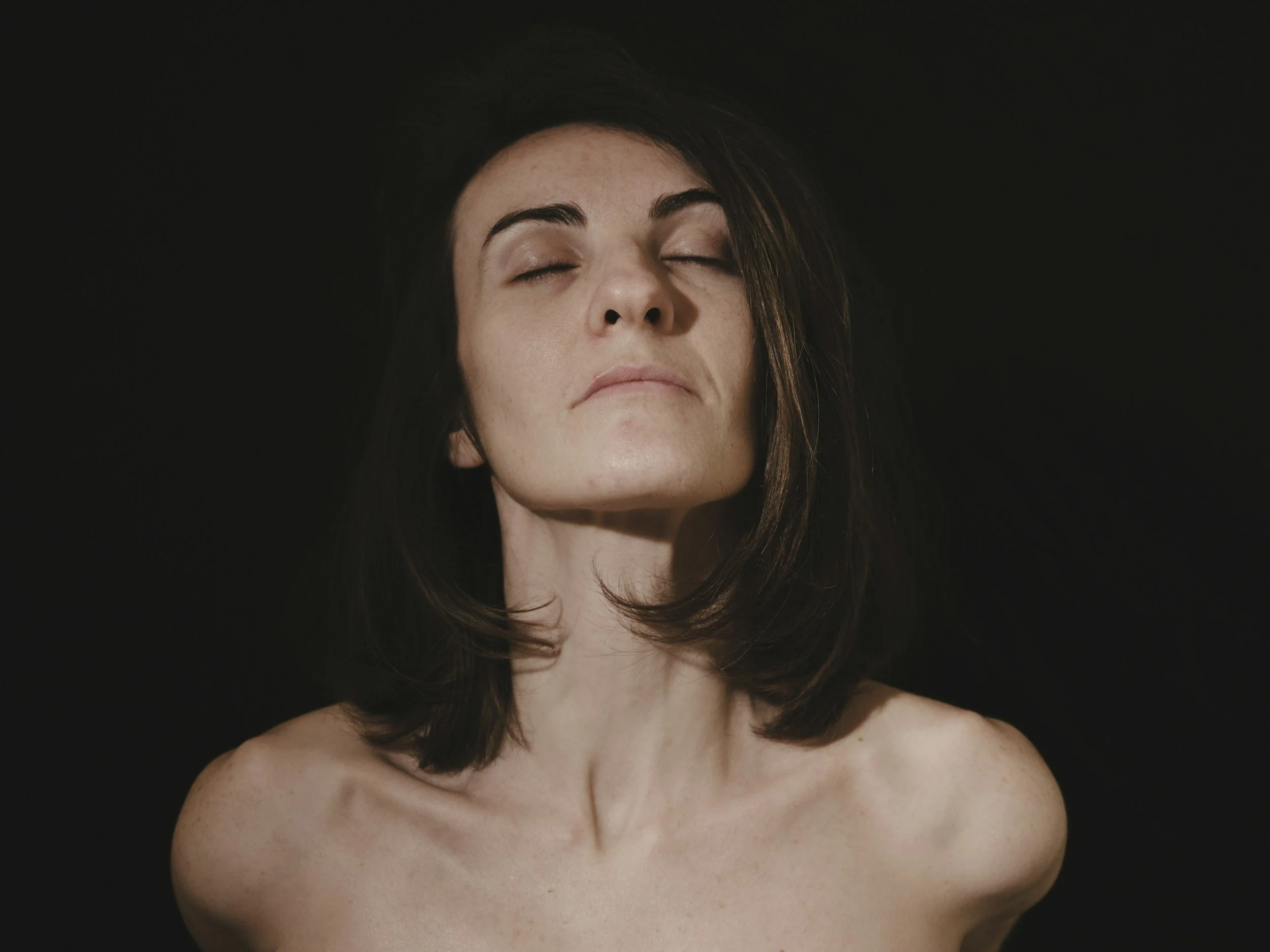Head Position and Neck Aging
Have you ever caught a glimpse of yourself in a side-view mirror or seen a photo of yourself from the side and been startled by your neck? Maybe you noticed lines, loose skin, or a “fullness” under your jawline that you definitely don’t see from the front?
If so, you're certainly not alone. The neck is one of the areas most affected by our modern lifestyle—and one of the first places many women notice age-related changes.
But here's what might surprise you: Many of the signs of aging we see in our necks aren't actually about age at all!
Neck aging is often about habits, tension, and posture.
Let me share something I've observed after working with hundreds of midlife women: There's a clear connection between how we hold our necks throughout the day and how they appear over time.
The culprit? "Tech neck" or "text neck"—the forward head position we often unconsciously adopt while looking at phones, tablets, and computers.
When your head juts forward instead of sitting balanced on your spine, several things happen:
The platysma muscle (the broad sheet of muscle covering your neck) becomes chronically shortened in some areas and overstretched in others
The skin folds and creases in predictable patterns, eventually forming horizontal neck lines
Blood flow is restricted, preventing optimal nourishment to the skin
Lymphatic drainage slows down, potentially leading to puffiness under the chin
The average human head weighs about 10-12 pounds. When it's balanced properly on your spine, your neck muscles don't have to work too hard. But for every inch your head moves forward, the effective weight on your neck muscles increases by about 10 pounds!
No wonder our necks show the strain!
The good news? Face yoga offers powerful techniques to address both the postural patterns AND their visible effects.
I was in my mid-50’s when I started really noticing my deepening horizontal neck lines. By that time, I was no longer using Botox but, even if I had been, the idea of injecting the toxin into my neck kind of freaks me out.
When I discovered face yoga and really started observing my day-to-day movements, I realized that I was spending hours at my computer with my chin tucked and my neck craned forward. Leaning into my growing face yoga knowledge, I developed a two-part solution:
Postural awareness practices to help me maintain a more balanced neck position throughout the day, even when I was looking at my computer or using my phone
Targeted face yoga exercises to release tension, tone the platysma muscle, and smooth the appearance of neck lines
Within just a few weeks of this combined approach, I started to notice significant improvements—not just in how my neck looked, but in how it felt. As a bonus, the chronic tension headaches I had accepted as "normal" started to diminish, as well.
Here's a simple neck alignment check you can do right now:
🍃 Sit or stand with your back against a wall
🍃 Make sure your shoulders, upper back, and buttocks touch the wall
🍃 Tuck your chin slightly and try to get the back of your head to touch the wall without tilting your face upward
🍃 Notice how this position feels—this is your optimal neck alignment!
Many of us are surprised by how far forward our heads have drifted from this aligned position.
And here's one of my favorite face yoga exercises for the neck:
Sit with proper alignment (shoulders relaxed, head balanced)
moisturize your neck with some oil or serum for glide
Place your fingertips on either side of your neck, facing behind your
Gently glide your fingertips up and back toward your jawline, widening your fingers as you go
Apply firm but comfortable pressure as you smooth upward
Repeat 5-10 times
This exercise helps to release tension in the platysma while stimulating circulation and lymphatic flow. It's wonderful to do whenever you catch yourself in that forward head position!
Remember, a beautiful neck isn't about looking 20 again—it's about releasing unnecessary tension, improving postural awareness, and supporting your neck's natural function and appearance.

